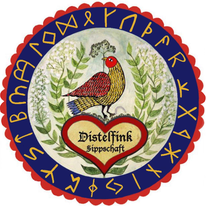Several discussions have recently emerged on the Urglaawe and Troth groups on Facebook concerning the many Matronae identified through votive stones in Europe. One conversation, in particular, led me to the section on the Matronae Austriahenae (Owwerne Austriahenae, Hausmidder Austriahenae, or Idise Austriahenae) in GardenStone's Gods of the Germanic Peoples, volume 1.
According to GardenStone (86-87), almost 150 votive stones have been found that were dedicated to these three Matronae. Most, if not all, of them were found in regions that contributed heavily to the Deitsch migration (Rhein-Erft district and Cologne areas). The name is confirmed to be Germanic, which the root austra meaning east or eastward. GardenStone also makes a case for considering (not assuming, however) a connection to the goddess Ostara/Eoster based on the name.
From Urglaawe myth, we know that at least some Deitsch folk considered there to be three goddesses involved with the Oschdre (Spring Equinox) holiday. In the myth, these three goddesses, Helling ("Daylight"), Oschdra ("of the East"), and Nacht ("Night") brought colors and shades to the world, gave names to the cardinal directions, and are associated with the fertility of animals (Hare and Finch (or Goose, depending on the variant)), and more.
While it is unlikely that there is a direct connection between this particular myth of the Oschdre and the Matronae Austriahenae, it is worth speculating upon whether tales that were retained or that emerged over the centuries may have some sort of association with deities who were known in days long since passed. Thus, it is worthy to consider whether it is possible that the Oschdre may be a living reflection of previously-known goddesses.

